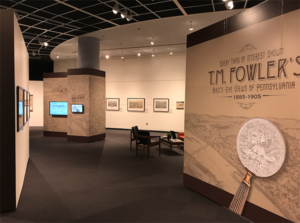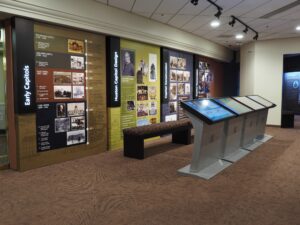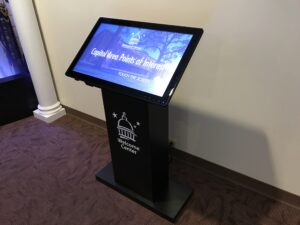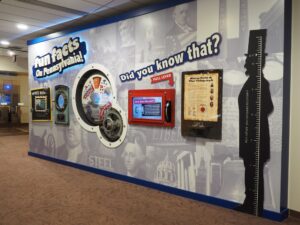
What makes a good museum exhibit? Even exhibits with rooms full of valuable artifacts can fall flat without strategic, thoughtful design. There’s a lot of hard work and planning that goes into creating an exhibit that is functional, educational, and pleasing to the eye. Plus, exhibits have to fit into pre-existing spaces and predefined budgets. Whether you’re creating your first museum exhibit design or your hundredth, the tips and ideas below will help kickstart your creativity.
Develop Specific Visitor Personas
You can’t create an engaging museum exhibit if you don’t know who your target audience is. The best way to define your audience is to create unique visitor desires. Based on your past experience, determine which types of people are most likely to visit your museum. What do they want from their museum-going experience, and what do they care about? Once you’ve identified their common traits and interests, you’re ready to start designing.

Tell Visitors an Engaging Story
Every museum exhibit should tell a story, rather than being a random assortment of displays. What’s the larger message you want to convey to visitors? Always design with the big picture in mind when you’re planning a museum exhibition. Your story should naturally guide visitors through the physical space of your exhibit by keeping them engaged with your story.

Visitors should leave your museum with a deeper understanding of the subject matter than they had when they walked into your doors. They should also be able to easily share with friends what they learned and leave wanting to find out even more.
Create an Immersive Experience with Technology
Technology is a powerful tool when you’re creating exhibits that educate, inspire, and impress. Traditional signage and banners are effective and eye-catching ways to convey information, but technology is also a useful ally. Here’s how you can incorporate technology when designing interactive museum exhibits:

- Use smartphone apps that walk visitors through your exhibit. These apps create the feeling of a personal tour, and you can even include fun bonus content.
- Incorporate interactive kiosks with audio and video content that enhances your displays.
- Add gamification like puzzles and treasure hunts to interactive kiosks to keep kids (and adults!) engaged.
- Consider incorporating large display monitors to surround visitors with engaging video and audio content.
- If you have the budget, augmented reality (AR) can also help you create an immersive museum visitor experience.
Devise Easy-to-Understand Displays
As a designer, it’s important to understand that most people will experience less than half of your exhibit. Visitors aren’t stopping at every single display and reading every label in full. Instead, they’re stopping at displays that catch their eye and reading the shortest paragraph on the label.

If the body copy is long and overcomplicated, you’ll probably alienate visitors. Your displays should speak to viewers on a one-on-one level that makes them feel comfortable, rather than talked down to. Relatability is key and will help you teach viewers as much as possible while they’re in your space.
Design with User Experience in Mind
Don’t fall into the trap of making your exhibit a complicated maze that’s difficult for visitors to navigate. Every piece of every display should be easy to see – large or small, vivid or monotone. It may be tempting to squeeze as many things as possible into your exhibit, but doing so can overwhelm and confuse visitors.

Make sure people can easily see signage that directs them through the exhibit, including directional arrows. Your exhibit should have a logical, linear flow that’s physically comfortable and mentally stimulating.
